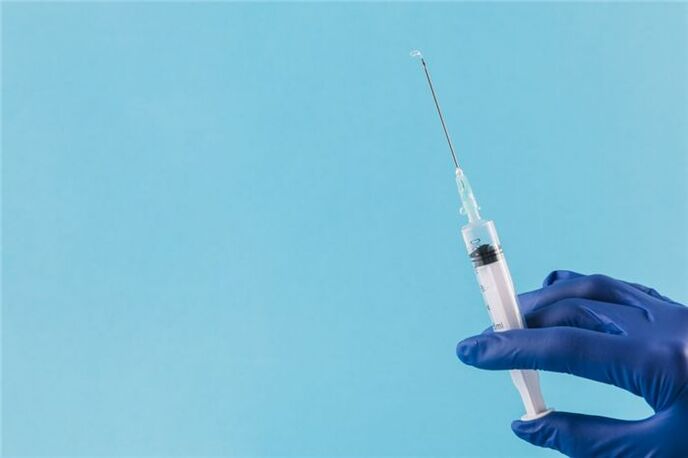In the human neck there are a large number of nerve bundles and blood vessels that ensure the normal functioning of the brain and sense organs. The most common cause of pinching them is cervical osteochondrosis, a dangerous degenerative disease of cartilage and bone tissue, which is accompanied by severe pain, deterioration in hearing, vision and cognitive function, numbness in the face and gradual loss of ability. working.
If, when turning your head, you are worried about pain and stiffness, frequent dizziness or weakness in your hands, it's time to think about the treatment of cervical osteochondrosis.

Causes of cervical osteochondrosis
Cervical osteochondrosis has its own characteristics, due to the anatomical structure. The vertebrae of the cervical region are smaller than the lumbar and even the thoracic, and also experience constant static loads (head weight). During the day, the load can be expressed in maintaining the same posture - for example, when reading a document, working on a computer. At night, the neck also often loses rest due to an unphysiological sleeping position and an uncomfortable pillow (the head either "hangs" on the pillow, or is a reference point and is under pressure). As a result of this pre-pathological condition, the so-called. muscle overtraining. Certain muscle groups are overstressed, and therefore need a longer rest and recovery period - but don't get it - because the schedule hasn't been cancelled.
All this causes constant tension in some muscle groups and dystrophic changes in others, and often leads to the appearance of a "turtle neck" (a person bends over, while the head protrudes forward, and the neck forms a characteristic deflection). In this situation, the weight of the head falls on the atlas, the first cervical vertebra. He had to take part of the load that the neck muscles could handle during normal physical development. But the fact is that he is not at all adapted for such a task!
Additional factors that can accelerate the wear of the intervertebral cartilage in the cervical spine are often:
- age-related and hormonal changes - most often after 45 years (inorganic substances prevail over organic ones, which reduce the flexibility of bones and cause their mineralization, and the destruction of bone tissue occurs faster than its growth);
- injuries of the neck and other parts of the spine;
- heart disease;
- congenital anomalies of the musculoskeletal system and acquired postural disorders;
- hypodynamia (after all, the intervertebral joints of the neck are the most mobile, and various loads are necessary for their health);
- smoking and other bad habits.
Stages of cervical osteochondrosis
The stage of cervical osteochondrosis is established based on diagnostic criteria. This includes the patient's own sensations, palpation, assessment of neck mobility, as well as gaps between vertebrae and other indicators on x-rays. Depending on the stage of the disease, the orthopedist chooses the treatment of neck osteochondrosis, preventive measures and, if necessary, supporting orthosis.
1 degree of cervical osteochondrosis
1 degree of cervical osteochondrosis is also called the preclinical stage. Patients, as a rule, ignore the first symptoms of cervical osteochondrosis and treatment is not carried out due to their mild severity. They are associated with fatigue after a day's work, uncomfortable sleeping positions, stress, migraines and various diseases. The patient feels:
- stiffness in the neck, especially in the morning or after a long stay in the same position;
- pain with a sharp turn of the head;
- frequent headaches (including weather changes).
At this stage of the disease, the treatment of cervical osteochondrosis in women is most likely - after all, their symptoms are more pronounced. This is due to both the specifics of work and physical activity (for example, working in an office during the day, and bending over the sink or children's homework in the evening), and hormonal and anatomical features (lower muscle and bone mass. mineral density) At the preclinical stage, for women it is mainly characterized by pressure surges, numbness and whitening of the skin (especially on the face), a tendency to fainting and dizziness, nausea, and some other symptoms of cerebral hypoxia.
Most often, symptoms and treatment of cervical osteochondrosis are faced by patients aged 45 to 65 years, but with chronic fatigue, excessive physical activity and other risk factors, they can appear quite early - starting from 25 years.
At this stage, the disease can be completely defeated with the help of therapeutic exercises, ointments for the treatment of cervical osteochondrosis, training in orthopedic regimens and normalization of nutrition.
2 degrees of cervical osteochondrosis
In the 2nd stage of the disease, the height of the intervertebral cartilage begins to decrease, which plays the role of a shock-absorbing insert between the vertebrae. Because of this, microtraumatization of the neck often occurs during sharp turns, jumps or excessive loads. Also appears protrusion (protrusion) of the intervertebral disc, radicular syndrome (compression of nerve endings).
These changes cause severe pain - in the head and in the neck. The ability to concentrate, the speed of thinking, the sensitivity of the face and hands is reduced. Patients complain of increased fatigue, irritability. At this stage, effective drug treatment of cervical osteochondrosis is already required.
3 degrees of cervical osteochondrosis
Severe and acute pain is permanent, can be given in the arms, upper back, neck. One or both arms of the patient tire quickly. This process begins to move to neighboring joints due to a violation of the natural compensatory function of the spine. The patient finds it difficult or unable to turn his head at all due to bone growths that form - osteophytes, as well as the fact that the cartilage is replaced by connective tissue. Every movement, if possible, is accompanied by a violent spasm. The neck loses mobility, its muscles atrophy. Hernias are often formed, cracks appear on the vertebrae. There is a noise in the ears.
Treatment of cervical osteochondrosis
Treatment of cervical osteochondrosis is carried out comprehensively, taking into account the patient's age, build, profession, level of physical fitness, lifestyle and the presence of concomitant diseases. Therefore, the appropriateness of specific therapeutic measures in the treatment of cervical osteochondrosis in women and men should be determined by the attending physician.

Physiotherapy for cervical osteochondrosis
To relieve pain, relieve inflammation, improve nerve conduction and brain nutrition, the following physiotherapeutic methods for the treatment of cervical osteochondrosis are used:
- ultrasound therapy and phonophoresis - have a warming effect, increase the effect of external drugs;
- electrophoresis - enhances the effect of the given drug, has a stimulating and warming effect;
- shock wave therapy (SWT) - activates blood circulation, relieves inflammation and increases the regeneration of bone and cartilage tissue;
- electromyostimulation - increases mobility and endurance of the neck and arms, relieves pain;
- cold therapy and ozone - reduce pain and inflammation, help reduce the dose of corticosteroid drugs;
- physical therapy and kinesitherapy - strengthen neck muscles, improve blood circulation and metabolism, maintain neck mobility;
- manual therapy and mechanical traction (traction) - help to get rid of clamps and pain;
- acupuncture - helps maintain nerve mobility and sensitivity;
- paraffin application - stimulates metabolic processes, reduces pain.
Sanatorium methods of treating cervical osteochondrosis are effective for and advantages - for example, balneotherapy (hydrogen sulfide, radon and turpentine baths) hirudotherapy (treatment with leeches).
Massage in the treatment of neck osteochondrosis
Therapeutic massage, lymphatic drainage and physiotherapy have a positive effect on the intervertebral disc, bone tissue, muscles and ligaments of the cervical region. Some movements can be performed independently - for example, rubbing the cervical collar, parotid zone and shoulders, washing the neck with the fingers and the edge of the palm, tapping, stroking and upward movements along the back of the neck. Not superfluous in the treatment of osteochondrosis of the cervical vertebrae will be a circular massage of the back of the head, as well as a warming massage for the clavicle area, shoulders, and upper back. Massage is especially effective before exercise therapy. You can combine it with the use of ointment for the treatment of cervical osteochondrosis.
With neck osteochondrosis, hydromassage is also recommended - a physiotherapeutic technique that improves metabolism, inhibits fibrous growth, helps relieve headaches and improves nerve conduction.
Exercise therapy for cervical osteochondrosis
Lack of sufficient physical activity in the muscles of the neck and back is the main reason for the development and further development of cervical osteochondrosis. Therefore, daily gymnastics is used for the prevention and treatment of this disease (but not for the treatment of exacerbations of cervical osteochondrosis! ). Remember that exercise should be done at least 3-5 times a day (of which 1 time in the morning, after waking up). All movements should be smooth, without jerks. If you feel pain during exercise, stop it, and if the whole complex hurts for you, contact an orthopedic specialist for medical treatment of cervical osteochondrosis, and also visit an exercise therapy instructor.
You can do the following exercises every day (5-7 repetitions):
- Press your palms to your forehead and tense your neck, try to move your palms with your forehead. Repeat this exercise for the back of the head, and then, next, for the right and left temples.
- Tilt your head back, and then slowly lower it, pressing your chin to your chest.
- Stand up straight and turn your head as far as possible to the left. Repeat the exercise on the right side.
- Tilt your head back and try to touch your shoulders with your ears. Repeat on both sides.
- Lower your chin to the jugular notch and turn your head first to one side (from 5 times) then, likewise, to the other side.
A warm-up for the shoulders, like a "factory", will not be superfluous. Daily exercise in the early stages of the disease helps to do without pills for the treatment of cervical osteochondrosis.
Please note: if you have been diagnosed with osteochondrosis, you should not describe a full circle with your head, because. it can be traumatic.
Diet in the treatment of cervical osteochondrosis
Osteochondrosis of the cervical region can be classified as the so-called. "disease of the whole organism. "Therefore, in the treatment of cervical osteochondrosis, the diet has two goals: saturate the body with nutrients and limit substances that contribute to dehydration, mineralization of joints and their destruction.
Therefore, in the treatment of cervical osteochondrosis, a special place in the diet should be occupied by:
- Chicken, lean beef, game, liver and offal. .
- Seafood - edible fish, shellfish, crustaceans, algae.
- Eggs and dairy products.
- Whole grains and legumes - oats, wheat (including sprouted), brown rice, legumes, nuts.
- Vegetables - carrots, spinach, bell peppers, broccoli, lettuce and others.
- Fruits - apricots, bananas, citrus, plums, apples, avocados, peaches, pomegranates.
- Nuts.
- Any berries (fresh, dried, frozen) and dried fruits.
But marinades, salty dishes, fast food, semi-finished products and sausages should be completely excluded. It is also important to reduce white bread, potatoes, sweets (except for dark chocolate and dried fruits), carbonated drinks and coffee "from the bag" in the menu - this will reduce the need for drug treatment of osteochondrosis of the cervical spine.
Preparations for osteochondrosis
Conservative treatment of osteochondrosis includes various therapeutic measures - from massage and diet to therapeutic exercises and physiotherapy. All of them help improve the patient's condition and prevent the development of complications. But the main method has been and remains using pharmaceuticals for osteochondrosis.

The goal of medical treatment
Treatment of osteochondrosis with drugs is very effective in the early stages of the disease, with the right treatment regimen, it can completely cure osteochondrosis or eliminate the most unpleasant symptoms permanently. At the final stage, medical containment of the disease is possible.
Medicines for osteochondrosis are designed to affect the disease not only symptomatically, but also to eliminate its cause systemically. Therefore, therapy is carried out according to the following instructions:
- anesthesia of the affected area;
- removal of inflammation and relief of the acute period of the disease;
- restoration of microcirculation in affected tissues;
- improvement of metabolic processes and protection of cartilage from further destruction (for example, by free radicals);
- regeneration of cartilaginous tissue in the intervertebral disc;
- restoration of mobility in the vertebral joints.
In cases where the disease is accompanied by depression or emotional stress, therapy also aims to restore a normal psychological state.
During the period of remission, the patient can do without the drug or take it in a course at a prophylactic dose.
Drugs for effective treatment of osteochondrosis: form of release
For the treatment of osteochondrosis, agents for external and internal use are used. The choice of drug release form depends on the habits and lifestyle of the patient, concomitant diagnosis and the stage of the disease.
Tablets and capsules
Tablets and capsules for osteochondrosis are the most popular forms of release. They have high bioavailability and systemic effects on the body.
Tablets should be taken directly with food, usually 2 times a day.
The main disadvantage of tablets (especially non-steroidal anti-inflammatory drugs) is that they act directly on the mucous membranes of the digestive system. Such drugs are not recommended for permanent use due to the risk of inflammation and stomach ulcers. They must be taken under medical supervision.

Ointments, gels, creams and solutions for compresses
Topical products are great for local anesthesia, inflammation and swelling. They are considered safer for the body than tablets, because they do not come into contact with mucous membranes and are absorbed into the blood in small quantities. Topical preparations have no cumulative effect, are easy to use and usually do not require a prescription. They can be used continuously, not in courses. Among the forms of external relief, patches are worth highlighting - they are only attached to the affected area of the spine, they can be worn under clothes all day.
Ointments, gels and creams are the best medicine for osteochondrosis for patients who have contraindications to taking pills (with steroidal and non-steroidal anti-inflammatory components) from the heart and endocrine system.
Solution for injection
Medicines for intravenous and intramuscular administration have maximum bioavailability and a reduced effect on the mucous membrane of the gastrointestinal tract, because the active substance goes directly into the blood.
Injection drugs for osteochondrosis can quickly stop the aggravation of the disease, relieve pain, swelling, and restore the sensitivity of the nerve endings. Injections are an excellent alternative to oral medications for patients with lactose intolerance. After all, most NSAIDs in tablets are drugs that contain lactose.
With severe back pain, this drug is given as a block - directly to the nerve. The effect of such an injection lasts up to 3-4 weeks, but a qualified medical worker should carry out the procedure due to the distance of the restriction to the spine.

What medicine should be taken with osteochondrosis?
Medicines for osteochondrosis differ not only in the form of relief. They are also divided into the following pharmacological groups.
Anti-inflammatory drugs for the treatment of osteochondrosis
The work of non-steroidal anti-inflammatory drugs in osteochondrosis is based on the suppression of the production of prostaglandins - hormone-like substances that cause inflammation and pain in the affected area. Non-steroidal drugs for osteochondrosis can quickly relieve pain and heat of the skin, restore local metabolism, relieve swelling, discomfort and decreased sensitivity, relieve pressure on the spinal nerve roots.
Non-steroidal anti-inflammatory drugs for the treatment of osteochondrosis are produced in various dosage forms - capsules and tablets, gels and creams, solutions for intramuscular, intravenous or s / c administration. NSAID treatment with drugs for osteochondrosis usually involves a combination of different forms. For example, tablets are used as the main therapy, gels and ointments "quench" residual inflammation, and injections are needed to relieve pain. Spots help relieve inflammation at all stages of treatment.
Steroid (hormonal) anti-inflammatory drugs for osteochondrosis are rarely used - especially in the most advanced cases, when other treatments do not show results.
Chondroprotectors
With osteochondrosis, the spring function of the intervertebral disc worsens, which directly depends on the amount of cartilage tissue and its elasticity. To maintain adequate cartilage thickness, the body must regenerate cartilage cells (chondrocytes) at a rate that roughly matches their destruction. But with dehydration, unbalanced nutrition, stress, metabolic or anatomical disorders, the rate of chondrocyte decay increases, and new cells either slow down growth or have insufficient safety margins. To protect cartilage and restore its normal growth rate, it is advisable to take special products based on glucosamine and chondroitin - chondroprotectors. Chondroprotective drugs for the effective treatment of osteochondrosis can stabilize the condition of cartilage, prevent further destruction, and, subject to all medical recommendations, even help restore lost chondrocytes.
For a sustainable effect, chondroprotectors (in the form of tablets, injections or external agents) must be taken for life, in a course of 3-6 months.
Warm-up preparation
To eliminate discomfort in osteochondrosis, the so-called. warming medicine. They are:
- dilates the blood vessels of the skin, which prevents the transmission of pain impulses to the brain;
- improves blood microcirculation in the connective tissue;
- divert the patient's attention from discomfort.
When using irritant drugs, the peak effect is observed after half an hour, and the analgesic effect lasts for 2-4 hours. A local increase in skin temperature is normal.
The list of drugs for the treatment of osteochondrosis includes ointments, creams, gels and tinctures based on:
- camphor (camphor ointment);
- turpentine;
- benzyl nicotinate;
- not nivamide;
- capsaicin (capsicum color);
- bee and snake venom.
Most of these drugs have a combined composition - for example, bee venom and NSAIDs or snake venom, salicylic acid and turpentine. Therefore, before use, you must make sure that there is no allergy to each component.
Local and general analgesics
Painkillers for osteochondrosis are usually used in the form of tablets and injections. With common pain syndromes, common medicines in the first aid kit can help.
In the final stages of osteochondrosis, opioids are prescribed - strong drugs with several contraindications.
For complex anesthesia (for example, blockade), which is called. A "cocktail" that simultaneously has analgesic, decongestant, anti-inflammatory, local anesthetic and allergen reducing effects.
Important! Analgesics only relieve pain without affecting the cause. Therefore, without proper treatment, osteochondrosis continues to develop, requiring a transition to more and more serious painkillers.
Vasodilators
Vasodilator drugs for osteochondrosis, or vasodilators, help restore normal blood supply to the tissues around the affected intervertebral joints.
Due to pain and muscle tension, the blood vessels narrow. This worsens tissue nutrition, causes oxygen starvation of the brain and accelerates the development of the disease. Therefore, with cervical osteochondrosis, drugs to normalize blood circulation are very important.
Vascular medicine for osteochondrosis improves peripheral blood circulation and cell metabolism, relieves pain.
Antispasmodic and muscle relaxant
To eliminate spasms and tension, antispasmodics and muscle relaxants are used. They normalize blood circulation, reduce pain, restore mobility.
To increase the effect of muscle relaxers for osteochondrosis, they may be prescribed together with clonazepam or diazepam (prescription drugs).
These drugs can be addictive, so use with caution.
Sedative
Symptoms of osteochondrosis and drug treatment often cause chronic stress, emotional stress, depression and other disorders of the psycho-emotional spectrum in patients.
To calm the general and combat insomnia, you can use herbal preparations - for example, tincture of valerian, motherwort, peony.
For more serious disorders, antidepressants are recommended.
Vitamin and mineral complex
Since osteochondrosis is considered a disease of the whole organism, complex vitamin and mineral therapy is very important. Vitamin A, group B, C, D, E, calcium and phosphorus preparations help improve the condition significantly.
Vitamin Aa natural antioxidant that stimulates collagen production and reduces the destruction of chondrocytes, promoting the renewal of joint tissue.
B vitaminsreduce pain, inflammation and numbness of the hands, increase the sensitivity of nerve fibers.
Vitamin Dresponsible for the absorption of calcium and helps restore bone tissue lost due to osteochondrosis.
Vitamin Eneeded to normalize blood circulation, protection against free radicals and cartilage regeneration.
Prevention
If attention is paid to the prevention of cervical osteochondrosis, even with existing changes, their development will slow down significantly. Doctors recommend:
- lead an active lifestyle, avoid hypodynamia;
- minimize or eliminate heavy lifting;
- sleep on orthopedic mattresses and pillows;
- Do a regular warm-up if you have to work in front of the computer for a long time.
The ideal sport for osteochondrosis is swimming. Water unloads the spinal column, and active movement contributes to the formation of the muscular skeleton.

























